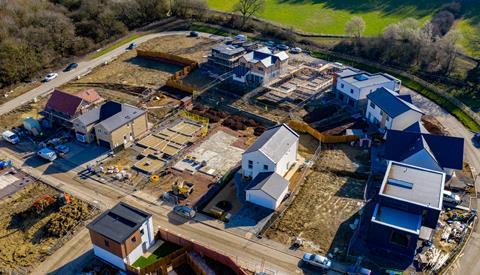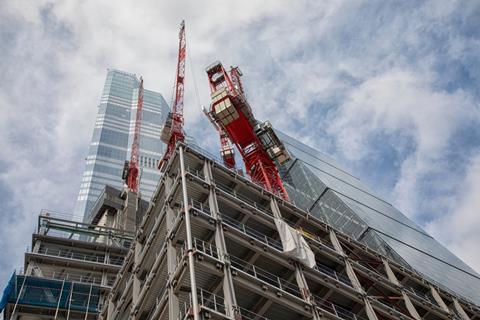Official figures support fears housebuilders are beginning to rein in activity
Housebuilding output dipped in March for the second month in succession, according to the latest official statistics, adding to fears housebuilders are responding to growing economic and cost pressures by beginning to rein in activity.
Construction output figures from the Office for National Statistics showed that seasonally adjusted housebuilding output fell back by 1.2% in March, after a marginal drop in February, with just under £3.7bn of work completed in the month.
This figure puts it just above the output seen in the same month last year, and the strong January numbers mean the first quarter output as a whole is still ahead of the output for the last quarter of 2021.

However, the trend of output starting to tail off accords with recent Energy Performance Certificate (EPC) data, which appear to indicate house building rates beginning to fall, with just 57,643 EPCs issued in England in the first quarter of this year - a drop of 8% on the same quarter a year ago.
The ONS also said that new orders in the housebuilding sector were beginning to drop off, falling back 8% in the January to March quarter on the last quarter of 2021.
Construction information provider Glenigan has also recently reported that the volume of residential construction work starting in April was 28% down on the previous year.
The ONS figures show that the decline has occurred despite the continued boom in the housing market, and with output still not having hit pre-covid levels. Housing output in the year to March was £42.8bn, the ONS figures showed, 7% below the figure seen in the year to March 2020.
The numbers come as housing secretary Michael Gove appeared to distance the government from its 300,000 homes-a-year housing target yesterday in interviews launching its planning reforms. Gove said aiming for one numerical target risked “making an enemy of the common good”.
The March decline in housebuilding came as the UK economy also saw a surprise contraction in the month, albeit it did not stop construction as a whole registering growth in the month, as the industry bounced back from February storms.
Construction output recovered in March with repair and maintenance and new build work helping send monthly growth to a record high, the official figures revealed.
Output was up 1.7%, from just 0.1% the month before, to a figure of £15bn – the highest since records began in January 2010.
The increase was driven by a 3% rise in repair and maintenance and a 1% rise in new build.

The ONS said private housing repair and maintenance (5.8%) and private commercial new work (4%) were the main contributors to the increase.
And the storms which were blamed for the fall in output in February came to the rescue in March with the ONS saying that anecdotal evidence “suggested [the] storms [which included Dudley and Eunice] resulted in businesses seeing a higher workload in March 2022 because of the repair work derived from [them]”.
March’s output level was 3.7% – or £539m – above the February 2020 pre-pandemic level, although new work was still 1.6% (£148m) below the February 2020 level. But repair and maintenance was 13.8% (£687m) above February 2020.
The ONS said construction output in the first quarter rose 3.8%, the strongest quarterly growth since the first quarter of 2017 where it rose 3.9%.
Overall, the economy shrank 0.1% in March, compared to no growth seen in February. In the first three months of the year, the economy grew 0.8%.










No comments yet